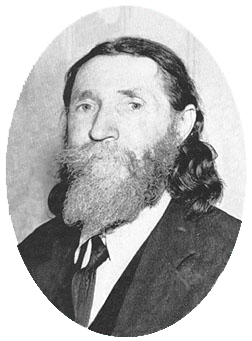Grass Valley, CA — For over a century, locals in Grass Valley have insisted that the Wright Brothers’ renowned 1903 flight at Kitty Hawk, North Carolina, was not the first time humans took to the sky in an airplane. Historians have typically dismissed the claims made by Nevada County sleuths and history enthusiasts that Lyman Gilmore accomplished this feat more than a year earlier.
Yet, recently uncovered evidence by a Grass Valley researcher implies that Orville and Wilbur Wright’s historic December 1903 flight was not only preceded by the enigmatic and reclusive Lyman Gilmore but, even more remarkably, Mr. Gilmore’s purported May 15, 1902 flight endured eight times longer and reached altitudes of up to 500 feet over Nevada County.
“This discovery will undoubtedly rewrite history books,” stated Hank Snow, a Grass Valley handyman and part-time historian. “Everyone around here knows the story, but not many beyond that. Whenever someone brings it up, like in a History Channel show, we get called a bunch of quacks. Well, this photo changes all of that.”
Lyman Gilmore

Lyman Gilmore, an aviation pioneer, worked from a hangar on the outskirts of Grass Valley, CA, where the Lyman Gilmore Middle School now stands. In his early 20th-century workshop, he constructed what he claimed to be the world’s first steam-powered airplane and asserted that it took flight on May 15, 1902.
Aviation experts have argued that the flights would have been impractical due to the requirement of a heavy boiler and reliance on coal as a power source. Furthermore, records and evidence supporting his claim were lost in a suspicious 1935 hangar fire, which many believe was no accident.
“Mr. Gilmore was in contact with the Wright brothers,” continued Mr. Snow. “They all knew what each other was doing. The Wright Brothers knew they were beaten but also knew Gilmore was eccentric. This gave them a jump on their marketing. Wilbur understood the power of movies, and if he could get their flight filmed, everyone would forget about ‘loony Gilmore,’ as he referred to him in his diary. And I have reason to believe that operatives from the North Carolina government torched his hangar for obvious reasons.”
Alternative Flight History
For years, “alternative-history” flight enthusiasts had no evidence beyond oral accounts to support their belief that Mr. Gilmore achieved the world’s first airplane flight. That changed last week when Mary Shilling, a 5th generation Nevada County resident, shared some early 20th-century family photos with Mr. Snow.
Ms. Shilling recounted her encounter with Mr. Snow at Sierra Presbyterian’s yard sale, where he eagerly examined her box of old photos. After pointing out Gilmore’s plane in the sky in one of the pictures, he became visibly excited. Mr. Snow subsequently contacted Nevada City electrician and amateur forensic photograph researcher Phil Meadows for his opinion on the photograph.
Mr. Meadows explained, “It’s tough to forge these old photos even with modern technology. There’s the aging, the chemical processes, the shadows. I mean, it’s nearly impossible to simulate the noise of the aperture issue they had back then. So the only thing I can say about this sample is that I wish it weren’t so blurry because skeptics will not be satisfied with it.”
As for Mr. Snow, he is more confident than ever that this evidence proves Lyman Gilmore was the first to take flight.
“I was already convinced before this. I mean, this is just the icing on the cake. But now I have evidence to take to the world, you know? Seeing is believing. I wonder if North Carolina will change their license plates to something like ‘Second in Flight,’ eh?”
The revelation can potentially shift public perception and rewrite a key chapter in aviation history. While skeptics may continue to question the validity of the photo, this new evidence has rekindled interest in Lyman Gilmore’s story and his role in the development of human flight.
Grass Valley residents hope this discovery will shed light on their local legend and elevate Lyman Gilmore’s status in the annals of aviation history. As this debate continues to unfold, it remains to be seen how historians, experts, and the general public will respond to the claim that the Wright Brothers were not, in fact, the first to conquer the skies.